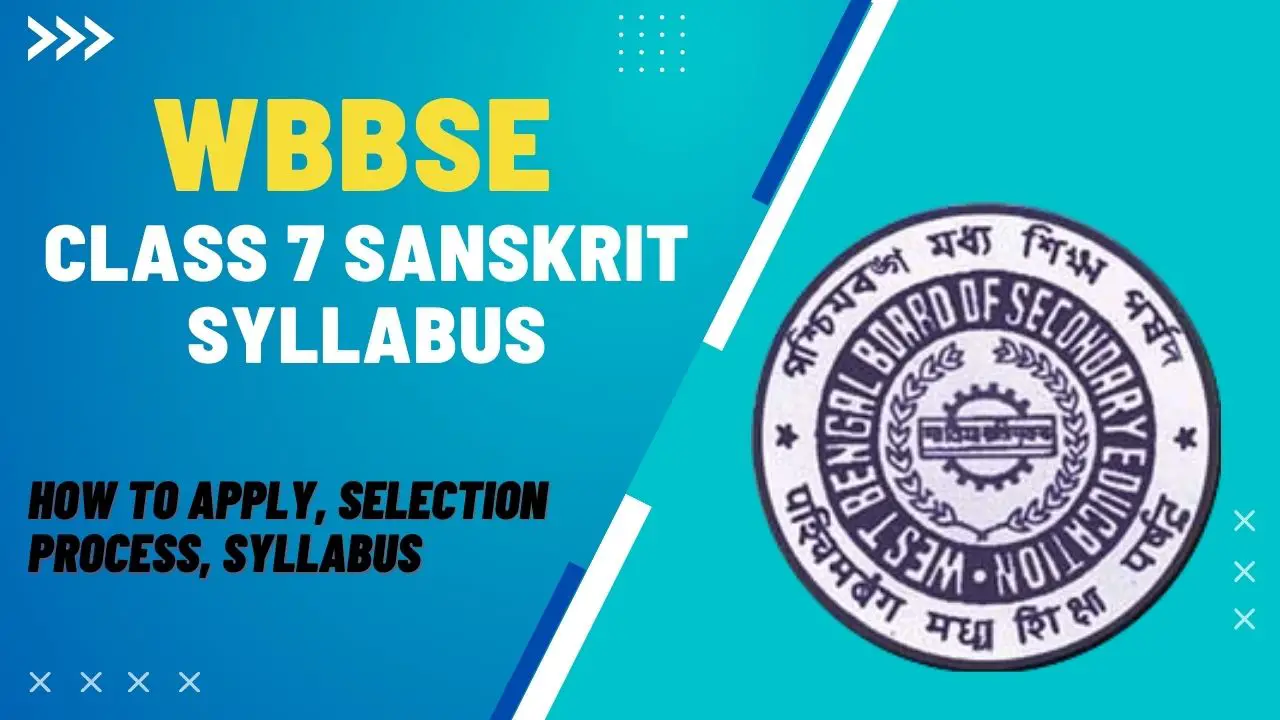WBBSE is a state-level organization in West Bengal that is responsible for overseeing and regulating secondary education in the state of West Bengal. WBBSE was established in 1951, the WBBSE is in charge of regulating the syllabus and curriculum of secondary education in West Bengal. It provides the necessary guidelines and framework for affiliated schools and conducts annual examinations for students in the 10th grade.
The WBBSE also has a major role in improving the quality of education by making sure schools adhere to their set standards. The WBBSE strives to promote better education in West Bengal by providing quality resources and guidance to its affiliated schools, making sure they adhere to the regulations set forth.
The exams are conducted in both English and Hindi, and students are provided with two options to choose from. The West Bengal Board of Secondary Education (WBBSE) plays a key role in the educational system of West Bengal. Through the implementation of higher educational standards, and the provision of quality resources to help its schools reach those standards, WBBSE works to ensure that students receive an education that prepares them for further success.
WBBSE also works to promote equity and inclusivity among its students. The board also has a responsibility for conducting exams once a year, which are conducted by the teachers appointed by WBBSE. By setting educational standards and making sure schools have the resources to reach them, WBBSE seeks to guarantee that its students receive a quality education.
READ MORE: WBJEE JENPAS 2023 Exam Date: JEE for Nursing, Paramedical & Allied Sciences UG Courses!
WBBSE Class 7 Sanskrit Syllabus Overview
| Name of the Board | WBBSE |
| WBBSE | West Bengal Board of Secondary Education |
| Subject | Syllabus |
| Article | WBBSE Class 7th Sanskrit Syllabus |
| Class | 7th class |
| Official website | CLICK HERE |
Importance of Sanskrit Subject
Sanskrit is a language spoken in India for thousands of years. Its literature has been flowing at an uninterrupted pace from the Rigveda period until today. The number of texts written in this language in various fields of knowledge and science is not found in any other language. A Sanskrit word is predominant in most of the languages spoken in the subcontinent. Therefore, knowledge of the Sanskrit language proves helpful in learning other languages.
It promotes and sustains the knowledge of Indian languages. The basic consciousness of Sanskrit literature is to see India as a nation while maintaining diversity. Despite the regional disparities in India, the elements that have bound this country together are the Sanskrit language and its literature.
The study of Sanskrit is a useful and productive exercise if performed correctly. The number of texts written in Sanskrit, both in the fields of science and literature, not only makes it one of the most ancient languages, but also one of the most influential languages to date.
In addition to being instrumental in helping a person learn other Indian languages, it is equally an important tool for national integration. It reinforces the idea of India as a single country made up of myriad diverse cultures.
READ MORE: WBJEE PUBDET Admit Card 2023: How To Download And Release Date!
Study and Teaching of Sanskrit Language
The study and teaching of Sanskrit at the level of the 7th grade should focus on imparting elementary knowledge, generating interest, motivating moral, social, and national values, and identifying Sanskrit words used in the mother tongue. Specific objectives can be set at the upper primary stage, such as the ability to pronounce Sanskrit sounds correctly, understand and speak simple sentences, read Sanskrit passages with meaning, recite Sanskrit shlokas by memory, write simple sentences in Sanskrit, generate curiosity towards Sanskrit language and literature, sense and appreciate the rhythm of poetry, and develop an aesthetic sense, imagination, and thinking ability.
With these objectives in mind, educators must employ teaching methods that are engaging and enjoyable for students. To achieve these objectives, educators must make use of appropriate teaching strategies and methods. These methods should include lectures, discussions, the recitation of shlokas and stories, the dramatization of certain stories in Sanskrit, and assignments to practice reading and writing.
WBBSE Class 7 Sanskrit Syllabus
| Class | 7th |
| Subject | Sanskrit |
| Examination date | Will be notified soon |
| Lessons – Part 1 | Ruchira, Hasyabhalik kavi sammelan, Anarikaya jignyasa. |
| Vyakaranam (Grammar – Part 2) | Ucharanasyanam, Sandhi, Kaarak uppadh vibhaktiya, Shabdarupani, Sharvanaam shabdarupani, Sankhyavachak shabd, Poornavacahaka Shabd, Dhatru rupani, Padh parichay, Upasargh avyay, Pratyaya, Ashudhi samshoganam, Samay lekhanam, Patra lekhan, Samvada, Chitra daarita prashna, Chitra varnam, Apathit anuchidh. |
READ MORE: Kolkata Police Constable Recruitment 2022: Exam Date, Admit Card, Important Dates
WBBSE Class 7 Sanskrit Examination Tips
Preparing for the WBBSE Sanskrit exam is an important process that you should not take lightly. To ensure that you are fully prepared, follow the tips below:
- Preparing for the WBBSE Sanskrit exam requires careful planning, thorough preparation, and strong knowledge of grammar.
- Familiarize yourself with the syllabus and study minor details such as grammar rules, reading and writing skills, and vocabulary.
- Try past papers to get accustomed to the different types of questions.
- Use test preparation software to practice on a regular basis.
- Adhering to a fixed schedule will help you stay organized and focused on your goals.
- It is important not to spread your energy too thin by attempting too many tasks at once.
- The most productive strategy is to focus on individual objectives one at a time without getting distracted by unimportant tasks.
- There are a number of things you can do to prepare for the WBBSE Sanskrit exam.
- First, check out the syllabus and write down important dates.
- Learn the rules of grammar and practice reading and writing in Sanskrit.
- The more comfortable you are with the language, the better your experience will be.
- While preparing, you can also read, translate and analyze texts, which you can then discuss in class with your teacher.
- Many people find past papers useful when it comes to exam time. They give an indication of what might be on the test and help with preparation.
FAQ’S
Q1. What is the name of the WB Class 7 board?
The West Bengal Board of Secondary Education (WBBSE) is the board for Class 7.
Q2. What are the West Bengal Secondary School first division marks?
Candidates must receive at least 480 marks to receive the first division. Marks above 360 will place a student in the second division, while marks above 272 will place a student in the third division.
Q3. What are the passing marks for Class 7?
The pass mark for each external examination subject will be 33%.
Q4. Does the WB Board follow NCERT?
The West Bengal Board of Higher Secondary Education does not directly teach using NCERT textbooks. The NCERT syllabus and the one provided by the council have some similarities.
Q5. What are the West Bengal Board's passing marks?
Candidates must receive 272 out of 800 according to the West Bengal Madhyamik marking scheme in order to pass the test.
Q6. What are topics in the 2nd division of class 7th sanskrit examination paper?
Ucharanasyanam, Sandhi, Kaarak Uppadh Vibhaktiya, Shabdarupani, Sharvanaam Shabdarupani, Sankhyavachak Shabd, Poornavacahaka Shabd, Dhatru Rupani, Padh Parichay, Upasargh Avyay, Pratyaya, Ashudhi Samshoganam, Samay Lekhanam, Patra Lekhan, Samvada, Chitra Daarita Prashna, Chitra Varnam, Apathit Anuched are grammar topics that are asked in the Class 7th 2nd division.
READ MORE: WBJEE JEPBN 2023 Application Form: Exam Date, Eligibility, Syllabus, & More

